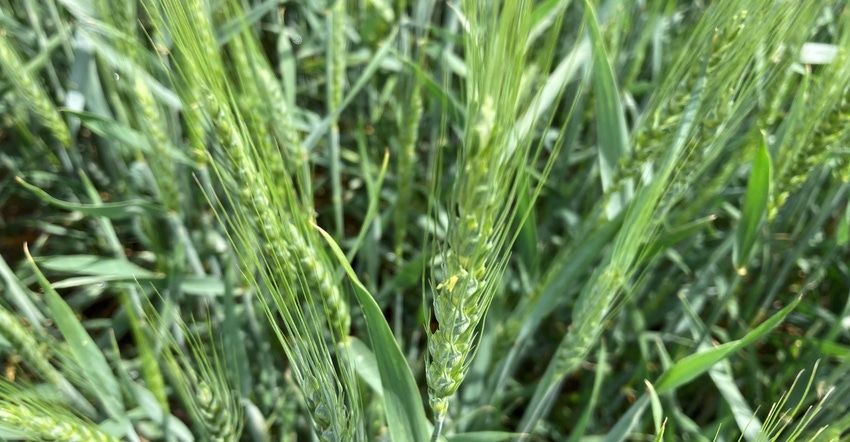
The Wheat Quality Council’s 2021 Hard Winter Wheat Tour Day One reports from Colby, Kan., caused a little cautious excitement among the wheat experts on May 17.
The day’s estimated yield average of 59.2 bushels per acre is the highest measured since 2012’s 53.4 bushels per acre. The tour’s last official Day One estimate, recorded during the last in-person tour in 2019, was just 46.9 bushels per acre.
However, that yield estimate comes with many caveats, explains WQC Executive Director Dave Green. First, the tour was pushed three weeks later, so participants are measuring a more mature crop.
“There’s something to be said for seeing the crop at a little later,” Green says. “Counting tillers gives you one of the three yield components. The late-season formula counting heads gives us two of the three components. But we still don’t know what the pollination will be like. Will we get two, three, four kernels per spikelet? There’s a lot of yield to be determined, but we know more than we do in a normal year.”
Green cautions that the final tour yield estimate accounts for three days of field observations, and reports from the southwest portion of the state are not optimistic. Farmers from the far western and southwestern parts of the state at the Colby recap reported that recent rains have helped the crop survive drought, but it won’t likely break any records.
Routes
The Day One routes take the tour from Manhattan, Kan., to Colby, Kan. Carloads evaluate the wheat in the northern and central part of the state, and the first day rolls right through the heart of the state’s prime wheat country.
This year, just 15 cars with fewer than 50 participants came on the tour. That’s maybe half to two-thirds of the numbers the tour would typically get, Green says. That’s due to company and country travel rules because of COVID-19, he adds. Still, the formula the tour uses accounts for that.
“I thought the crop looked great,” Green says. “I’m still hesitant because I know there are areas of the state that aren’t great. I’m hesitant because I know there are still rainfall patterns that will determine how this crop comes out. To my eye, though, I thought the route I took today was the best wheat I’d seen.”
Conditions
The tour saw quite a lot of stripe and leaf rust in the fields along the Day One routes, but farmers are treating those fields with fungicides.
Part of that is due to the price of wheat right now, part of it is the yield potential this crop shows.
“We’re seeing prices we haven’t seen in a long time,” says Aaron Harries, Kansas Wheat. That’s encouraging farmers to put a little more management into the wheat crop this year.
Harries says his car saw disease pressure, but they also saw sprayer tracks in fields, and airplanes flying on fungicide.
“Wheat streak mosaic virus in western and central Kansas will likely affect the crop more,” Harries says. The wet fall right before wheat planting came right as corn was also being harvested. Farmers just didn’t have time to kill volunteer wheat, which harbors the wheat curl mite that transmits the virus, he explains.
Romullo Lollato, Kansas State University Extension wheat specialist, joined Jeanne Falk-Jones and Lucas Haag, both KSU agronomists out of the Northwest Research and Extension Center, Colby, to provide insights into the 2021 crop.
Falk-Jones says wheat in the far northwest and west parts of the state are highly variable, due to dry drilling conditions last fall. There is also a swath of the region that suffered hail damage from May storms, she adds.
Rest of tour
Participants will load up into their vans for Day 2 of the wheat tour May 19, driving on color-coded routes south out of Colby and then west to Wichita, Kan. There, they’ll provide an update from the western and southern Kansas wheat fields. The final leg of the tour, May 20, will trace routes from Wichita back to Manhattan, where the final yield estimate for the state will be announced at a luncheon.
To follow along with updates from participants, be sure to follow the Kansas Farmer Twitter account, @farmer_kansas, as well as the #WheatTour21 hashtag. And like and follow the Kansas Farmer Facebook page, facebook.com/KansasFarmerNow.
About the Author(s)
You May Also Like






